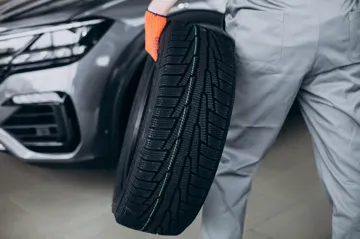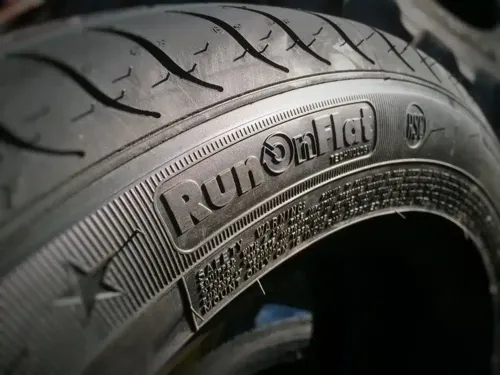How To Choose The Right Tyres For Your Car?
Get tips on selecting the right size, type, and features for improved safety and driving comfort.
Posted on

Choosing the right tyres for your vehicle is essential for safety, comfort, and performance. With numerous options available in the market, selecting the best fit for your car can be overwhelming. This guide will help you understand the key factors to consider when choosing tyres, ensuring you make an informed decision tailored to your driving needs.
1. Understand Your Vehicle’s Requirements
The first step in selecting the right tyres is to understand your vehicle’s specific requirements. Every vehicle is designed with particular tyre specifications that affect its handling, comfort, and overall performance. This information can typically be found in your vehicle’s owner manual, on the driver’s side door jamb, or inside the fuel cap.
Key information includes:
- Tyre Size: The tyre size is usually expressed in a sequence like 205/55 R16. The first number (205) refers to the tyre's width in millimeters. The second number (55) is the aspect ratio or profile, and the last number (16) represents the diameter of the wheel rim in inches.
- Load Index: This number indicates the maximum load the tyre can carry when properly inflated.
- Speed Rating: This letter (e.g., V, H) represents the maximum speed the tyre can safely sustain over time.
Using the correct size and specifications recommended by your vehicle manufacturer is critical for optimal performance.
2. Consider Your Driving Conditions
The type of driving you do will heavily influence the type of tyres that are most suitable. Here are some important factors to consider:
- Climate: The weather conditions you frequently drive in will determine whether you need summer, winter, or all-season tyres.
- Summer Tyres: Designed for warm, dry conditions, they offer excellent grip on both dry and wet roads but aren’t suited for freezing temperatures.
- Winter Tyres: These tyres are ideal for cold, icy, or snowy conditions. They provide improved grip and braking performance in freezing temperatures due to their softer rubber compounds and unique tread patterns.
- All-Season Tyres: A versatile option that can handle both warm and cold conditions, though they don’t excel in either extreme. If you live in an area with mild seasons, these might be a good choice.
- Road Surface: If you frequently drive on rough, unpaved roads, you may need more robust tyres with reinforced sidewalls, such as all-terrain or off-road tyres. For city driving on smooth roads, tyres with lower rolling resistance may be ideal for better fuel efficiency.
- Driving Style: Your personal driving habits can also influence your tyre choice. If you’re a spirited driver who enjoys high-speed cornering, performance tyres designed for better handling might be suitable. On the other hand, if you prioritize a quiet, comfortable ride, look for tyres with a focus on reducing road noise and enhancing comfort.
3. Tyre Types: What’s the Difference?

Tyres come in various categories, each designed to serve different driving needs. Here are the common types of tyres available:
- Performance Tyres: These tyres are designed for high-speed handling and provide superior grip. They are best for sports cars or vehicles that require enhanced performance, particularly on dry roads. However, they tend to wear out faster and may not be ideal for everyday driving.
- Touring Tyres: These tyres offer a balance between performance and comfort. They are designed to reduce road noise and provide a smoother ride, making them a popular choice for long-distance driving and daily commuting.
- All-Terrain Tyres: If you drive both on-road and off-road, all-terrain tyres are a great choice. They have a more aggressive tread pattern that can handle rough surfaces, but they still provide decent performance on motorways.
- Run-Flat Tyres: These tyres allow you to keep driving for a short distance after a puncture, usually up to 50 miles. They eliminate the need to carry a spare tyre but may offer a stiffer ride.
4. Check the Tread Pattern and Depth
The tread pattern on your tyres plays a significant role in how well your car grips the road. There are three common tread patterns:
- Symmetrical Tread: This is the most common tread pattern found on tyres. It’s designed for general road use, offering a smooth and quiet ride.
- Asymmetrical Tread: These tyres have two different tread designs, one on the inside and one on the outside. The inner tread helps channel water away, while the outer tread provides better grip on dry surfaces. They are suitable for performance driving and provide a balance between wet and dry traction.
- Directional Tread: These tyres are designed to rotate in only one direction, providing excellent traction on wet roads and reducing the risk of hydroplaning.
When selecting new tyres, also consider the tread depth. Tyres with deeper treads offer better traction, particularly in wet conditions. The legal minimum tread depth in many countries is 1.6mm, but it’s recommended to replace tyres once the tread depth drops below 3mm for optimal safety.
5. Budget and Longevity
Tyres vary in price depending on the brand, performance, and durability. While premium tyres tend to offer superior performance and longevity, they also come with a higher price tag. However, investing in high-quality tyres can save you money in the long run by offering better fuel efficiency and longer-lasting tread.
If you’re on a budget, there are many mid-range and budget tyre brands that offer decent performance for everyday driving. Keep in mind that cheaper tyres may wear out faster and may not provide the same level of comfort or safety.
Also, consider the tyre’s mileage warranty. Many tyre manufacturers offer warranties that guarantee a certain number of miles (e.g., 40,000 miles) before the tyres wear out. This can help you determine the value and longevity of the tyres you choose.
6. Tyre Maintenance Tips
Once you’ve selected the right tyres for your vehicle, proper maintenance is key to ensuring they last as long as possible and perform optimally. Here are some essential maintenance tips:
- Check Tyre Pressure Regularly: Under-inflated tyres can lead to uneven wear, reduced fuel efficiency, and compromised handling. Use a tyre pressure gauge to check your tyre pressure at least once a month, or before long trips.
- Rotate Your Tyres: Rotating your tyres helps distribute wear more evenly, extending their lifespan. It’s recommended to rotate your tyres every 6,000 to 8,000 miles.
- Balance and Align Tyres: Misaligned or unbalanced tyres can cause uneven wear, vibration, and poor handling. Have your tyres balanced and aligned whenever you replace them, or if you notice any unusual wear patterns.
Conclusion
Choosing the right tyres for your vehicle is a crucial decision that can impact your driving experience, safety, and vehicle performance. By considering factors like your vehicle’s specifications, driving conditions, and personal preferences, you can make an informed choice. Remember, investing in quality tyres and maintaining them properly will ensure they last longer and keep you safe on the road.
This blog post provides the essential information you need to choose the right tyres, whether you’re looking for performance, comfort, or durability. Stay safe and enjoy a smooth ride by selecting the best tyres for your vehicle.









